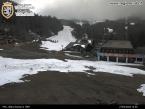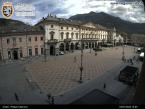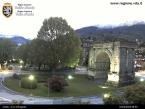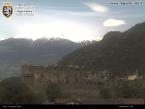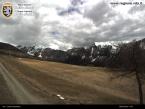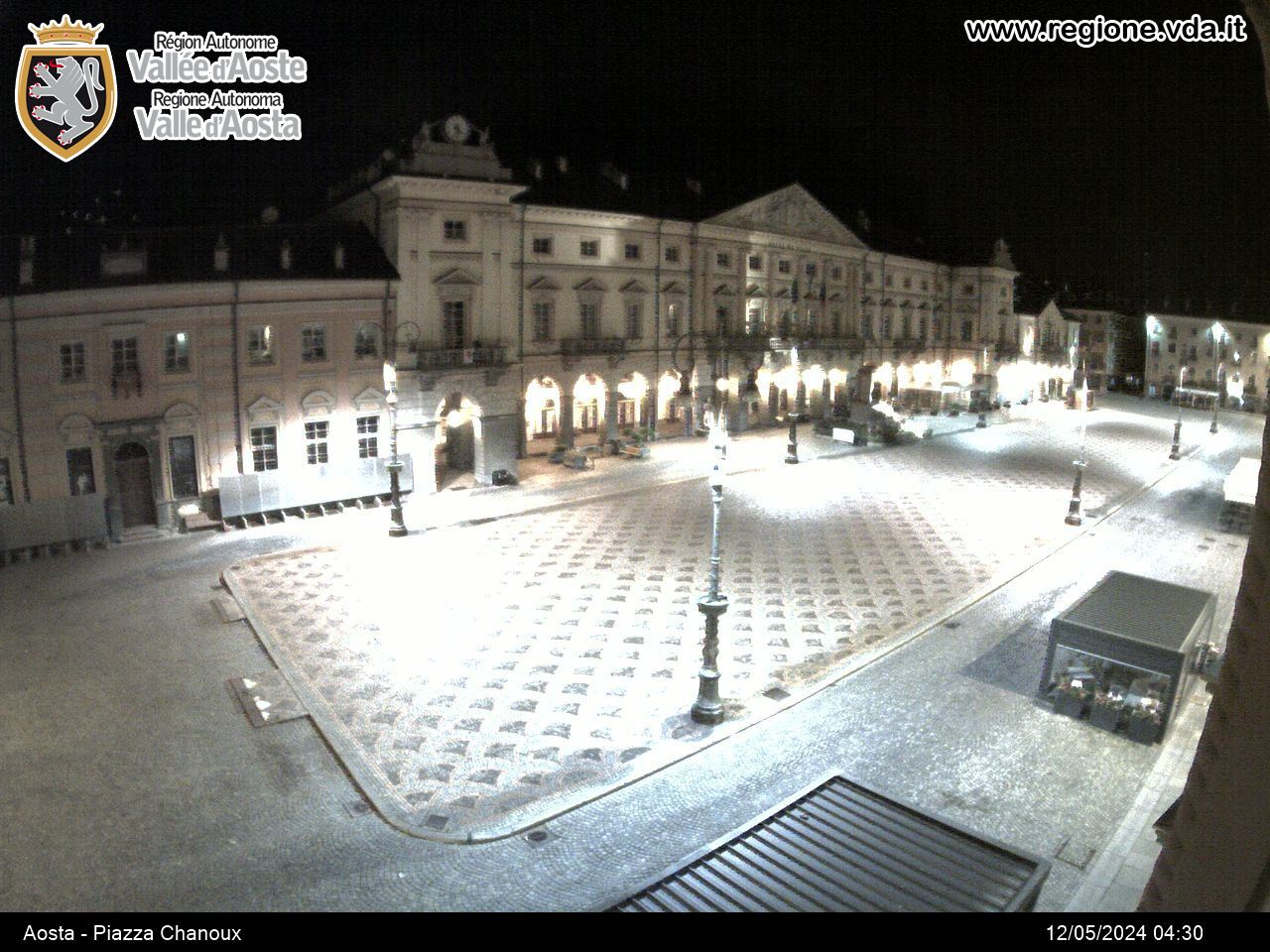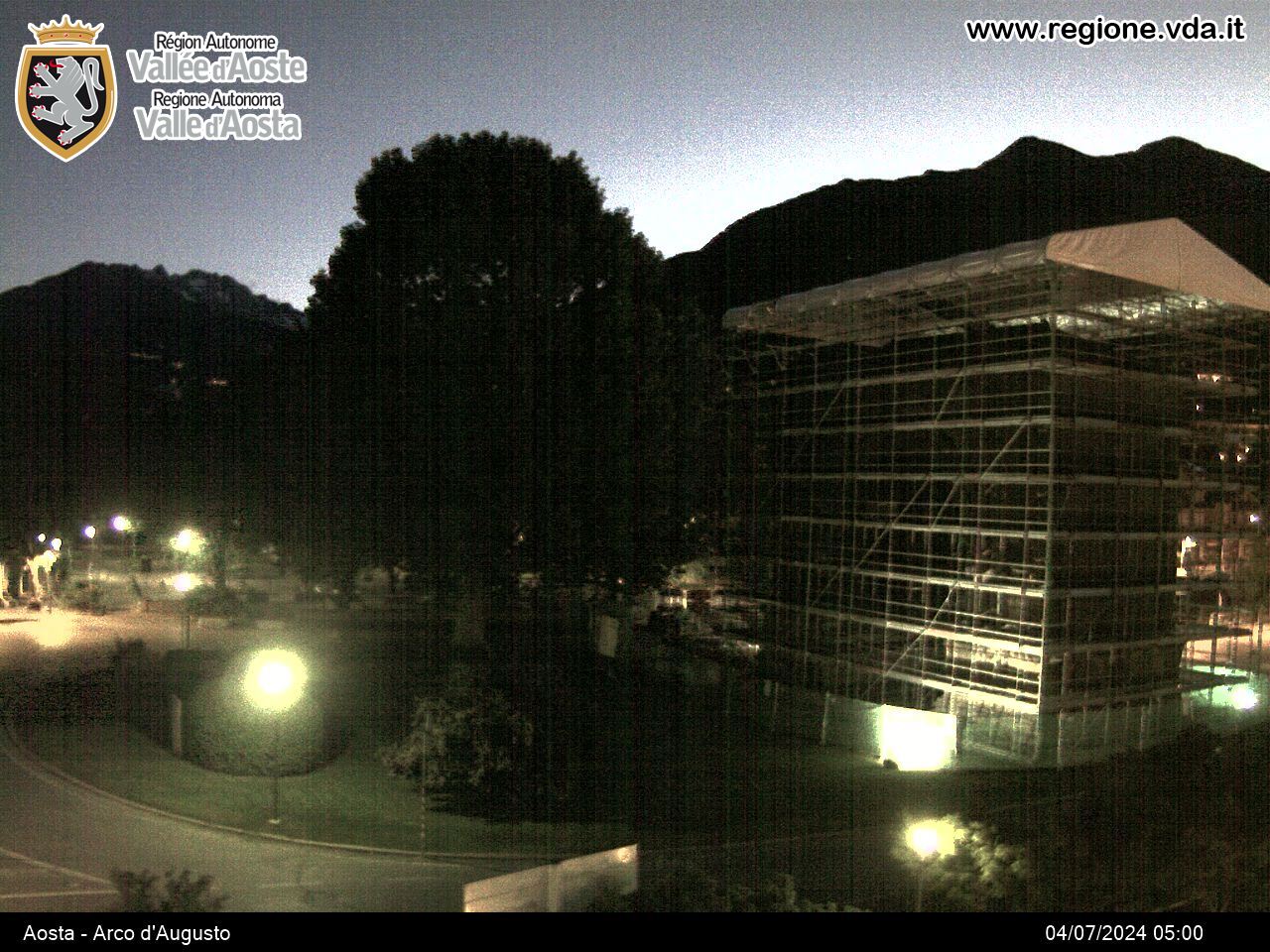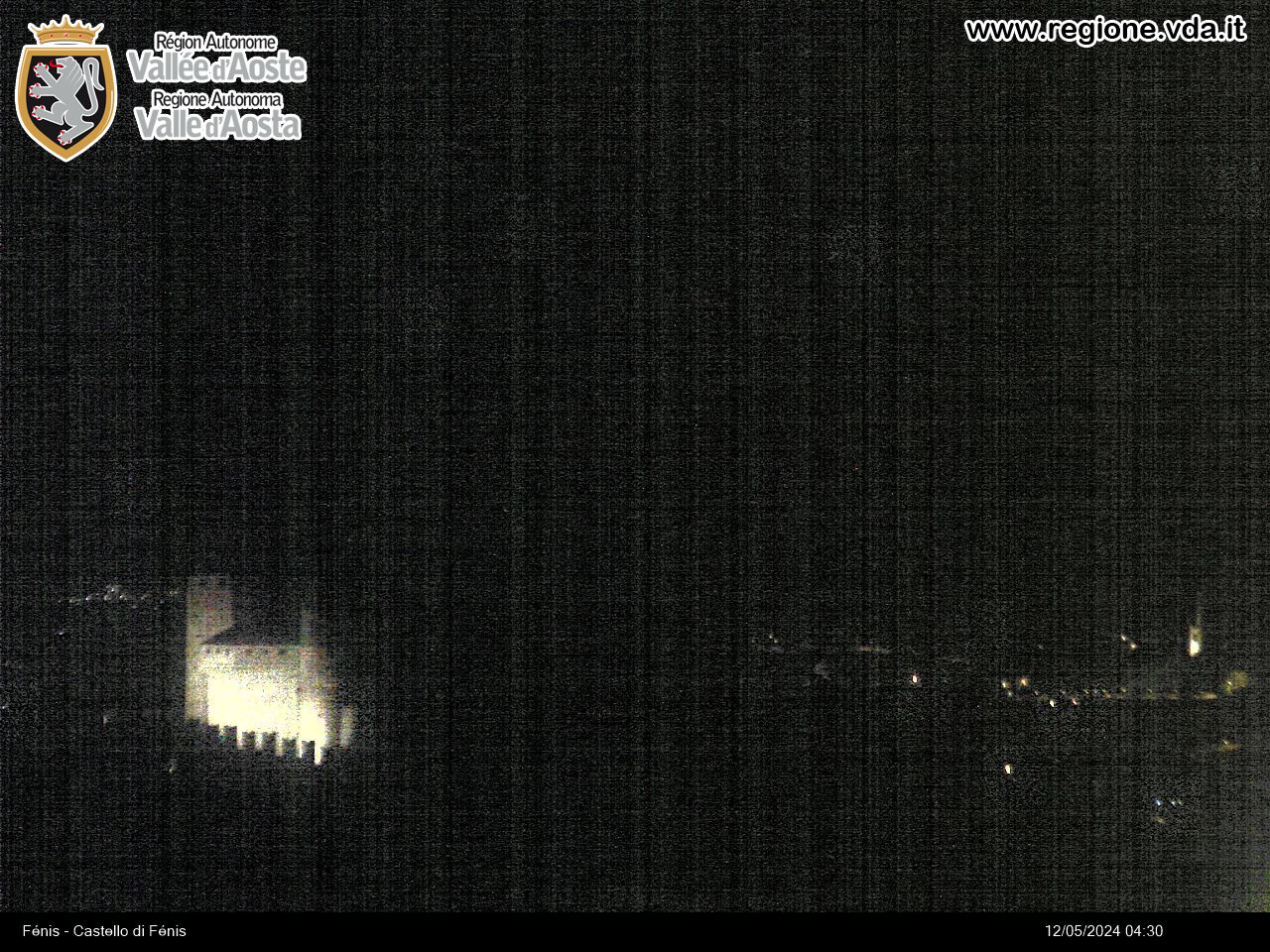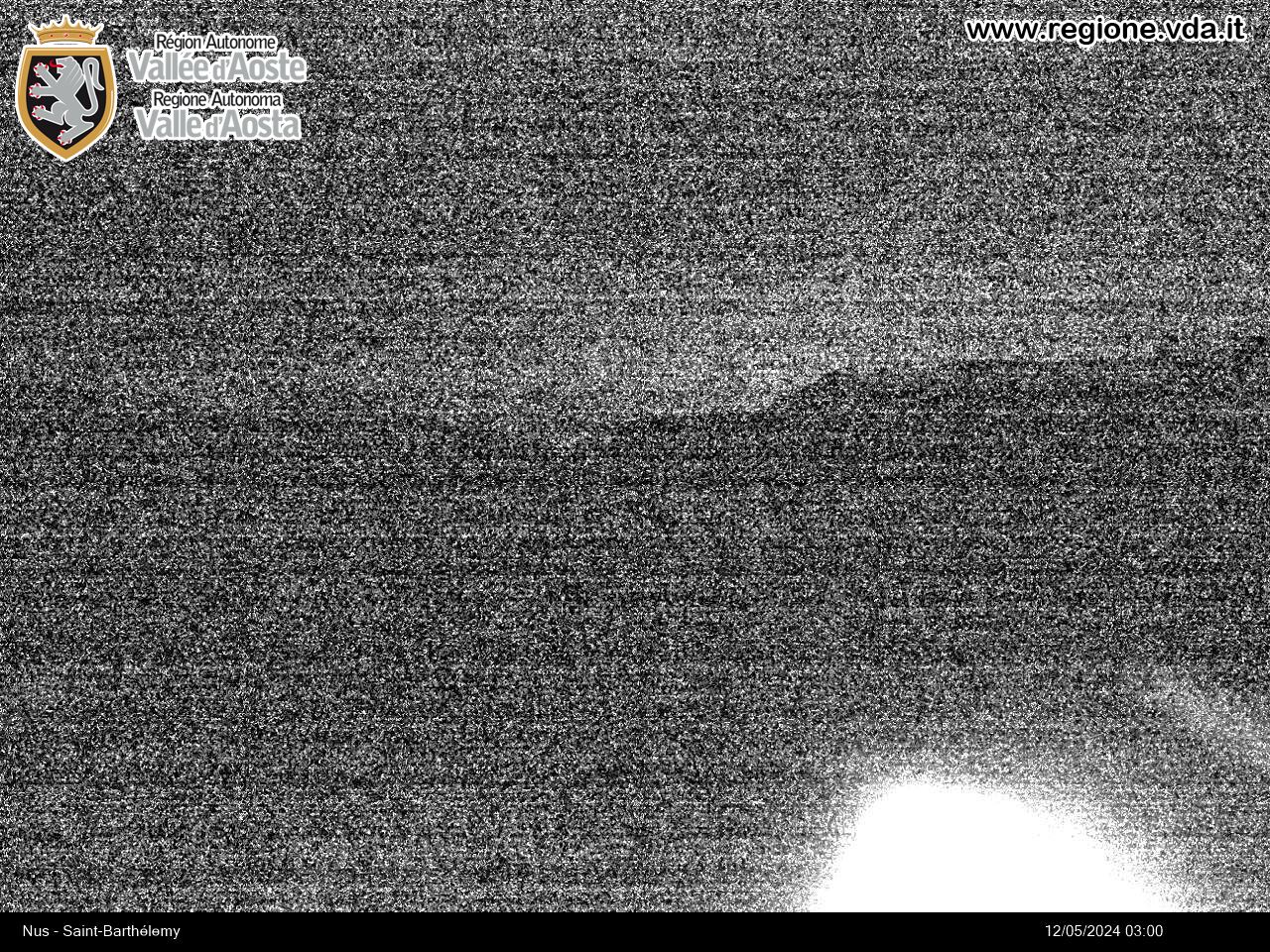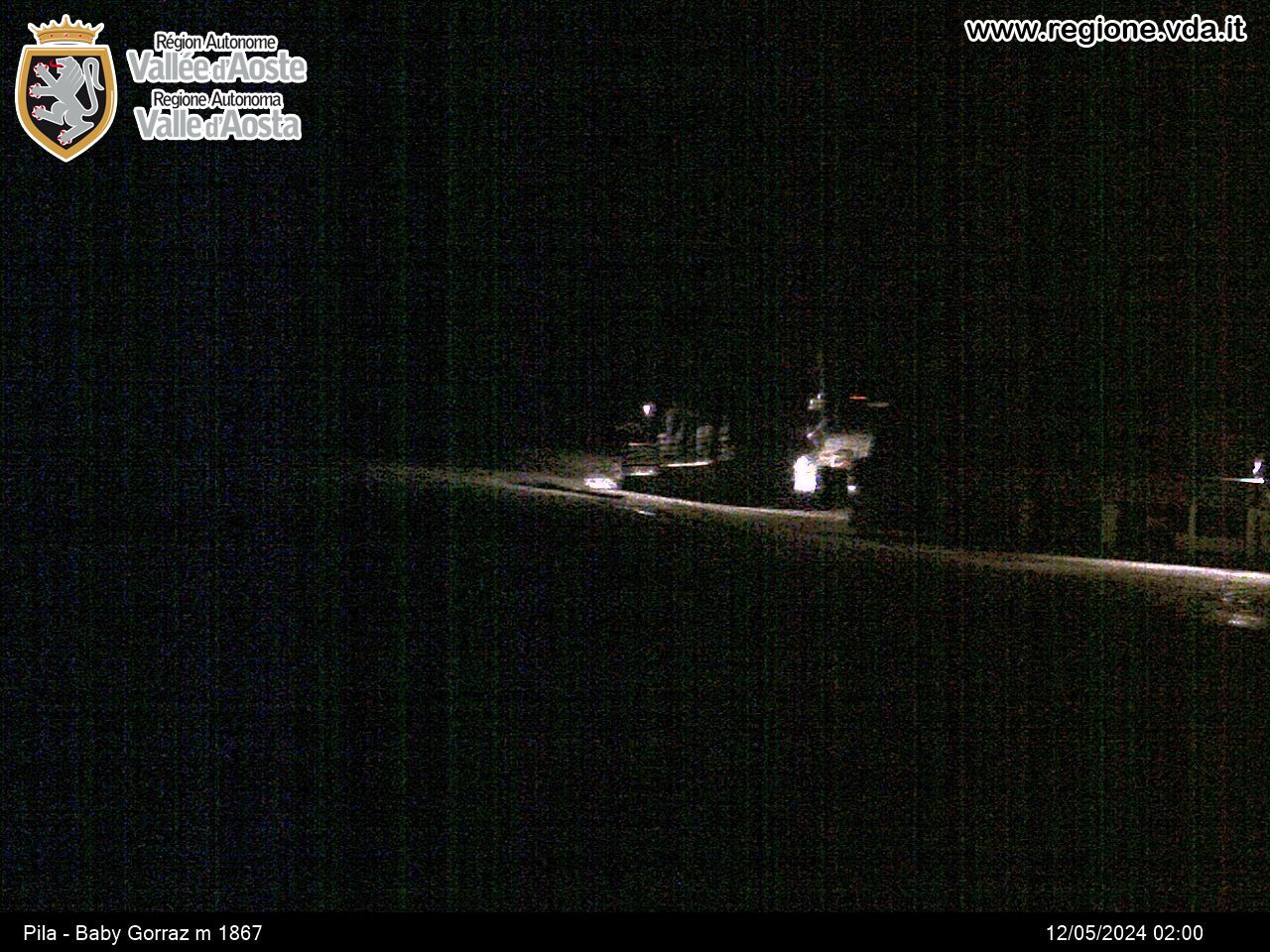Aosta
Aosta (580 m), the chief-town of the region, is the only true city of the Aosta Valley thanks to its 34,000 inhabitants. It lies in a vast flat area right in the heart of this Alpine region, surrounded by some high peaks, such as the Grand Combin and the Mont Vélan to the North, the Mont Emilius and the Becca di Nona to the South and the Testa del Rutor to the west. The city rises at the confluence of the Dora Baltea river and the Buthier stream and of the two main communication routes of the past that lead to France and Switzerland respectively through the Little Saint Bernard pass and the Great Saint Bernard pass. Today these two nations are reachable also through the Mont Blanc tunnel and the Great Saint Bernard tunnel.
Worth a mention is the Via Francigena, an ancient pilgrimage track which linked Canterbury to Rome and passes through Aosta. In its Valdôtain track this route starts from the Great Saint Bernard pass and continues along the central valley until Pont-Saint-Martin.
The Romans founded the city in 25 BC with the name of Augusta Praetoria in Gaius Octavius Augustus’s honour.
Known as ‘the Rome of the Alps’, Aosta still has the majority of the original city walls and a prestigious archaeological area that lies between the Porta Praetoria, the majestic old entrance of the city which is perfectly preserved, and the Roman theatre which, with its impressive façade, is one of the most significant evidence of the Roman age.
The visits rather interesting when done by having a stroll in the picturesque pedestrian roads and the central Piazza Chanoux. It is definitely a nice promenade under the sign of shopping, food and wine specialities* to try in one of the numerous restaurants, bars and wine shops of the city centre or while taking part to events and organised activities.
Aosta is the ideal departure point to move in the whole Aosta Valley and to take advantage of the various entertainment and sport opportunities both in summer and in winter. The gondola lift which leaves nearby the train station links the valley floor to the panoramic town of Pila (1,800 m), one of the most famous ski resorts of the region, in only 17 minutes. But Pila is also a magnificent summer destination for nice walks or thrilling descents with downhill and freeride MTB.
WHAT TO SEE
● Some exceptional Roman ruins are still very well preserved, as well as some Medieval masterpieces that contain some prestigious works of art. Some must-sees are:
The iconic Arc of Augustus and the Porta Praetoria, one of the best-preserved doors of the Roman epoch.
The Roman theatre, which today hosts events and open-air shows, and the Cryptoporticus, a Roman underground building which still marvels thanks to its atmosphere.
The Cathedral and the Collegiata di Sant’Orso which host some Medieval works of art, such as the XI-century frescoes of the attic, the pavement mosaics, the wooden chorus. The Cathedral also hosts the Treasure Museum, whereas in Sant’Orso a true must-see is the cloister with its carved capitals.
The Early Christian Basilica of San Lorenzo, built to host the remains of the first bishops of Aosta, rises right under the deconsecrated church of Saint Lawrence, which today hosts art exhibitions.
● The MAR – Regional Archaeological Museum, a neoclassical building which owns archaeological collections and hosts temporary art exhibitions.
● The Megalithic area of Saint-Martin de Corléans, one of the most significant archaeological sites in the whole European panorama.
NATURE AND SPORT
Aosta is the ideal choice for an itinerant holiday to discover the extraordinary *nature and sport attractions*offered by the whole region. Right close to the city centre some walking trails leave and allow people to reach parks and panoramic points in only a couple of minutes, such as the Tsatelet natural reserve or ‘Quota BP’, which dominates le flat area of Aosta from a hill.
Bike lovers can easily reach the cycle trail from the city sport area in Regione Tzamberlet, cycle along the banks of the Dora Baltea and finally reach to other towns of the area.
EVENTS AND TRADITIONS
● The millenary Sant’Orso fair is organised every year on 30th and 31st January in the town centre of Aosta: here more than 1,000 artisans expose their traditional works of art. The event culminates with the ‘Veillà’, the evening get-together in the night between 30th and 31st, during which the street of the city and lit up and quite busy until dawn.
● The Foire d’Éte is the summer version of the Sant’Orso fair and allows tourists and visitors to admire the local craft production realised by more than 500 artisans.
● The Final of the Concours Régional des Batailles de Reines which takes place every year in October in the Croix Noire arena. It is the last ‘battle’ between Valdôtain cows and the event draws large audiences.
● The Marché Vert Noël, the traditional Christmas market which from the end of November to 6th January transforms a corner of the city in a true Alpine village rich in craft products, Christmas decorations, local food and wine, everything in the charming set of the Roman theatre.
FOR THE LITTLE ONES
In addition to the numerous playgrounds available in various areas of the city, there is also the Saumont Park along the Buthier stream, only a couple of kilometres from the city centre, a nice stroll that can be done either on foot or by bike. The park is completely surrounded by nature, among tiny lakes, a cycle and pedestrian lane and a playground for kids.
Close to the indoor swimming-pool there is the regional open-air swimming-pool of Aosta, where is summer it is possible to have fun. Surrounded by a vast park, the structure has a small pool with water slides, gargoyles and water jets and a circular pool for the little ones. Very close there is also the Ice Palace, which gives the chance to families to have fun while ice skating.
The section for young people of the Regional public library of Aosta is worth a visit. It is a welcoming and colourful area for kids and young people under 14 years old where one can find readings, videos and audios for every age, entertaining activities and game areas for the little ones.
IDENTIKIT
● Inhabitants: 34.000
● Altitude: 580 m
● How to get there by public transport: Aosta can be reached from Pont-Saint-Martin by bus or by train and from Courmayeur by bus. The bus timetables can be found on the website of the Arriva company. The train timetables can be found on the website of the Trenitalia company.
USEFUL INFORMATION
● AostaInfo website
● Download the map of the town










